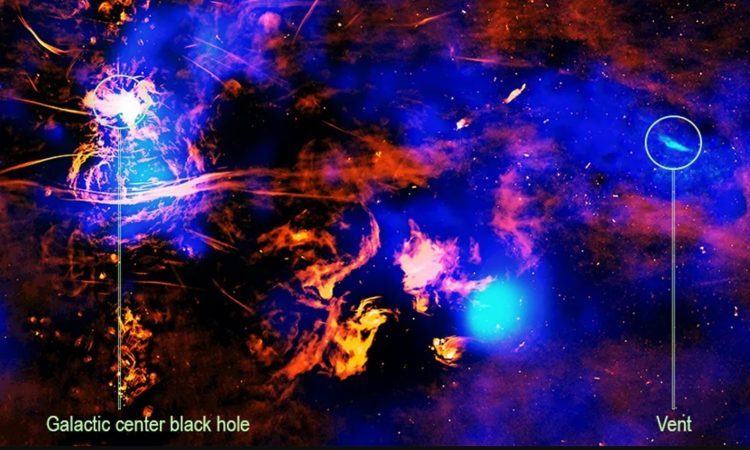
As we probe the sky with ever more powerful telescopes, we’ve discovered lots of things that our best models of the Universe didn’t predict, from oddball radio circles (ORCs) and Kyklos to potential galaxies oversized from the early Universe.
One particularly gigantic surprise was first spotted by the eROSITA X-ray space telescope, a Russian-German project to map the X-ray Universe.
In 2020, the telescope revealed a gigantic structure located somewhere towards
The problem was that the structure, which resembled a giant bubble, was at an unknown distance. It could have been either a giant local 102 parsec-scale structure nearby, but coincidentally in the direction of our galaxy’s supermassive black hole, or an absolutely massive structure 104 Sagittarius A* itself.
Recent studies have made it seem much more likely that we are dealing with a truly enormous structure toward the center of the galaxy, which bears a striking resemblance to the “Fermi bubbles” discovered by the Fermi Gamma-ray Space Telescope, writes .
A gigantic structure located somewhere towards the center of our galaxy
The favored explanation so far is that the “bubbles” are the result of a huge amount of energy being released in the galactic center (GC).
“Rather than being a stand-alone feature, the Lotus Petal Cloud composes the eROSITA Northern Bubble together with the North Polar Spur. Given that the two distant features (NPS and LPC) cover an angle of ∼90°, the bubble composed of them should be distant and gigantic, with a scale of several kiloparsecs,” explains a recent study published in Astrophysical Journal Letters .
“The most plausible model for such a structure is rooted and blown by episodes of energy release at the GC.”
“For now, we need to observe these bubbles much more to know the precise mechanism, but astrophysicists suggest that they are powered by outflows.”
A huge amount of energy produces “bubbles”
“We suspected that the magnetic fields actually act like chimney walls and that the hot gas travels up through them, like smoke,” Scott Mackey, a doctoral student at the University of Chicago and lead author of a study on this theme.
According to the study, when a star falls into a black hole, superheated dust climbs this “stack” at high speeds before exiting through the “vent” at the top, about 700 light-years above the galactic center. During the journey, the gas collides with cooler gas, creating shock waves and bright X-rays, picked up by ground-based telescopes.
More studies are needed to see the precise mechanism of these strange bubbles and what impact they have on other galaxies as well.

